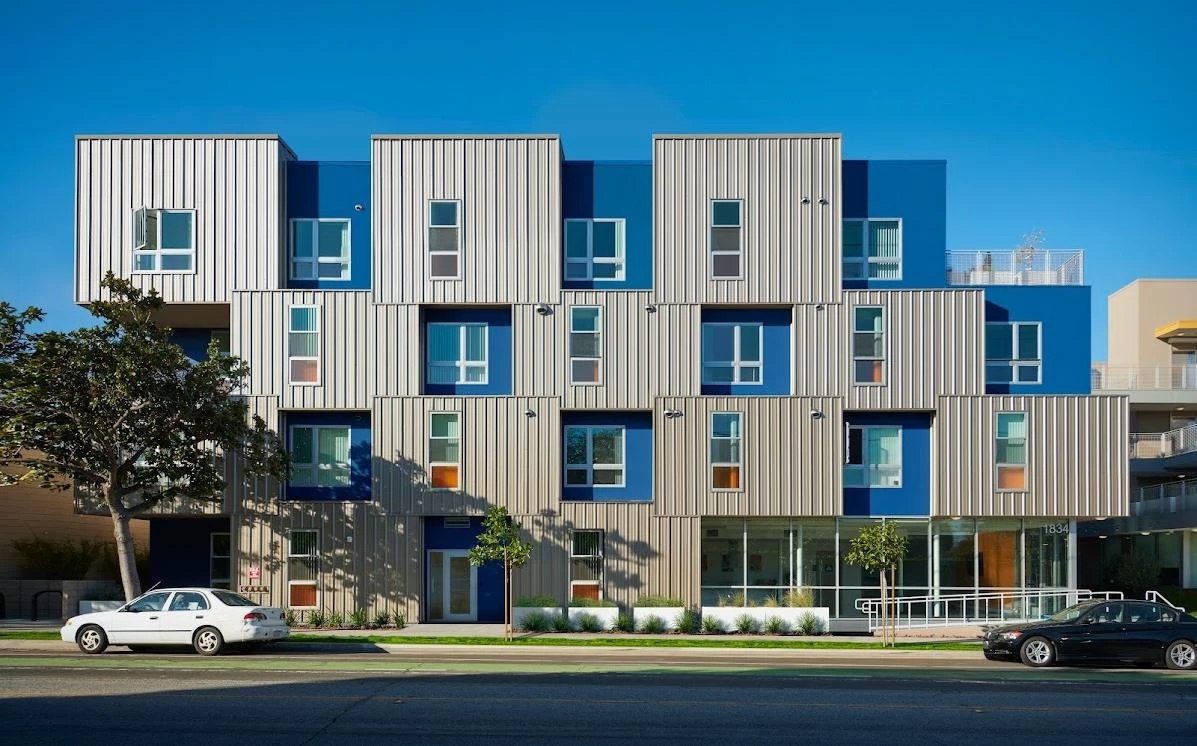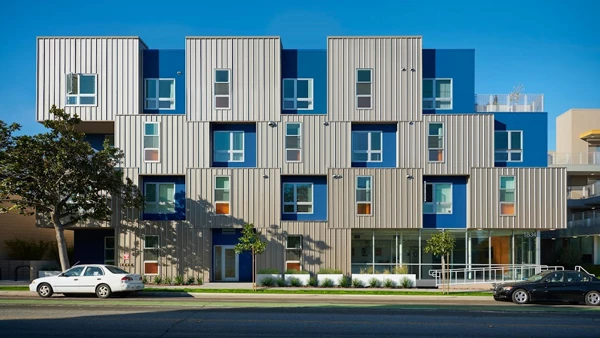Awesome and Affordable: Great Housing Now

Las Flores Santa Monica, by DEA
Friends of Residential Treasures: Los Angeles (FORT: LA) is collaborating with Frances Anderton, longtime architecture advocate and author of Common Ground: Multifamily Housing in Los Angeles, on an innovative online resource called “Awesome and Affordable: Great Housing Now.” This project aims to shed light on design-forward affordable housing solutions, with an initial focus on the Los Angeles region.
Awesome and Affordable, co-authored by Anderton and David Kersh, a long-time construction industry strategic policy and advocacy leader, features a monthly online newsletter showcasing exemplary case studies of a variety of affordable and attainable housing solutions. Each spotlight will delve into the design and background of a specific project, providing readers with valuable insights, drive-by visiting information, and a call to action with activities the everyday person can do to help alleviate the housing crisis.
“Awesome and Affordable makes the case that there are hope and tools for all those who feel that housing in LA is an insolvable mess,” Anderton writes in the introductory essay, “The Case for Great Housing,” which will be posted to FORT: LA’s website in mid-January. “FORT: LA believes the work accomplished in Awesome and Affordable will bring optimism and vision to the housing crisis in Los Angeles,” adds Russell Brown, founder of FORT: LA, a nonprofit organization that offers public events, research, and trails aimed at reinforcing collective pride in the built environment. “It’s particularly inspiring to learn about the many individuals and organizations coming together to improve lives through superlative architecture and design.”
Twelve case studies—dubbed Awesome Buildings of the Month—will be released throughout 2024 on FORT: LA’s website and in its newsletters (subscribe at www.fortla.org). Selections are based on being both affordable and awesome in their design, services, contributions to community, and connection to the street and surrounding neighborhood. The selected developments display the rich variety of housing for a wide range of economic strata—from unhoused people to the working poor and missing middle. They also explain aspects of housing that are often misunderstood, from the definition of “affordable” to the means of producing it, and the many challenges involved in building and sustaining housing at low and reasonable rents and purchase prices.
“Housing created by idealistic developers in tandem with equally utopian design teams make the case that Los Angeles can continue to lead the world in creating the residential dream, albeit in a form much different from the single-family house with a yard,” notes Anderton. She adds that with the passage of Measure ULA, Mayor Karen Bass’ ED1, and the 2028 Olympics coming into view, now is the time to evaluate and elevate affordable housing.
In addition to case studies, the project will offer “The Housing Terminology Playbook,” a substantive glossary of housing terminology, agencies, and legislation. “Housing looks the way it does because of a political development culture, where each new project is a micro-battle, with the forces at play varying case by case, week by week,” writes Kersh. While the project’s initial focus is on Los Angeles, its emphasis on affordable housing and design will be relevant to audiences across the US. The monthly dispatches, glossary, and history of housing will all be available for free via the FORT: LA website.
Awesome and Affordable is sponsored with a grant from FORT: LA and supported by Taylor & Company, a communications and marketing agency for the built environment. Among the featured established and emerging architects are Brooks + Scarpa, DE Architects AIA, Eric Owen Moss Architects, FSY Architects, Kevin Daly Architects, KFA Architecture, Koning Eizenberg Architecture, Lahmon Architects, Lorcan O’Herlihy Architects, Michael Maltzan Architecture, Mutuo and Urb-in, OfficeUntitled, RADAR, Relativity Architects, Stanley Saitowitz|Natoma Architects, Studio One Eleven, Tatiana Bilbao Estudio, and Tighe Architecture. Nonprofit developers include Abode Communities, Community Corporation of Santa Monica, Hollywood Community Housing, Holos Communities, Venice Community Housing (VCH), and West Hollywood Community Housing Corporation (WHCHC). For-profit developers represented include Community Builders Group, SoLa Impact, Thomas Safran & Associates, and Toledo Capital Development.
To kick off the project, FORT: LA is co-hosting a public forum on January 27th with the Neutra Institute for Survival Through Design in Los Angeles. A discussion on Vienna’s Gemeindebauten social housing and LA’s own history with public housing will consider the potential lessons Vienna’s successful example has for US designers and advocates.
‘Awesome and Affordable: Great Housing Now’ Aims to Evaluate and Elevate



